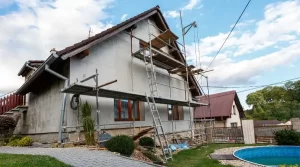Making your house genuinely YOUR HOME is one of life’s few more exciting endeavors. This article is for everyone who has been daydreaming about upgrading their home and may even have a seemingly endless list of goals and wants. You’ll need to reduce your wish list to a well-honed list of practical must-haves and action items before moving on to the next stage of your home renovation adventure.
Step 1: Budgeting
Decide on a specific financial range to use for your home improvement as the first thing you’ll need to do. You’ll note that we referenced a BUDGET RANG. The budget you have in mind when you begin this procedure should be LESS THAN the total amount you can afford to spend on your remodeling. As soon as you start knocking down walls for renovation, it’s a sad fact that you’ll discover unanticipated situations and difficulties. For this reason, you should set aside a portion of your total budget as a contingency. Using your custom builder, you will create the extent of your renovations based on the lower end of your budget. Knowing that you have a small cushion to fall back on in case something comes up or you decide you want to spend more money than you intended to on a finish choice will make the entire process less stressful for you.
Step 2: Begin with the Essentials
Go through your complete wish list and start categorizing the products into three categories: repairs needed, must-haves, and like-to-haves.
The maintenance tasks that you might have put off over the years will be included in the Repairs Required section. Add them to your Repairs Needed list if you have an outdated roof, a leaky window, or any other issues with your HVAC system. It’s possible that further repairs are required that you aren’t yet aware of. If anything else has to be done to bring your house up to code or make it a healthier environment for you and your family to live in, your dependable builder and their knowledgeable stable of subcontractors should be able to assist you in determining what needs to be done.
Items that originally inspired this remodeling trip will make up the Must-Have section. Maybe your children have given your house a lot of love and left the bathrooms in need of a lot of Maintenance. Your kitchen or living room could no longer be enough for your needs because your family has evolved over the past several years. You might need to include extra specialized or built-in storage as your family grows. Despite the situation, make sure your Must-Have list is full of the things you feel are required to make your journey through house restoration “worth it.”
Items that “certainly would be good” to have but might be the first to go if it turns out that your budget can’t cover the scale of the renovation that you had hoped it would, can be found under the “Like-To-Have” area. Depending on personal preferences, each person’s list may vary, but it’s typical to include some of the more upscale finishes that you might or might not choose to include. Examples of items on this list include replacing manual window coverings with mechanized shades, switching to steel windows from the current ones, completely rebuilding a fireplace mantle and surround rather than simply refinishing the old one, and upgrading all kitchen appliances as opposed to just the ones that need to be replaced.
Step 3: Concentrate on the Spaces You Utilize Most
For your money to truly matter, this is essential. Pay special attention to the areas of your home that you use regularly, such as your kitchen and breakfast nook, living room, master bedroom, and any other rooms. Think twice before upgrading your teenagers’ rooms to the “best of the best” if they will be leaving the nest in a few years. Particularly after children have outgrown their younger years, we frequently discover that supplementary bedrooms and baths, dining areas, and bonus/game rooms slide lower on the priority list. Although most people find greater every day benefits from improving their interior spaces, improving the exterior of the property (beyond repairs) occasionally comes lower on the list.
Step 4: Meeting a custom builder early
Once your lists have been refined, the best course of action is to choose a reputable custom builder by conducting interviews with them. They will assist in developing an approximate estimate based on the current cost of materials and labor so that you can jointly narrow down your list of options after discussing a wide range of possibilities. Your custom home builder will also put you in touch with an interior designer and an architect they believe will be a suitable fit for your demands, taste, and spending plan. Your custom builder should keep updating their preliminary estimate as you progress through the planning and pre-construction phases with each choice and decision you make so that by the time you’re prepared to start construction, your budget is complete and correct.
Visit our previous blog post here for additional information on conducting interviews with potential custom builders.
The most important thing to keep in mind as you refine your wish list and go on to the next stage of your home remodeling is to assemble a trustworthy team of partners who put your interests and ambitions first. It might make all the difference to work with a custom home builder, architect, and interior designer who are reliable, communicative, and of the highest caliber.







